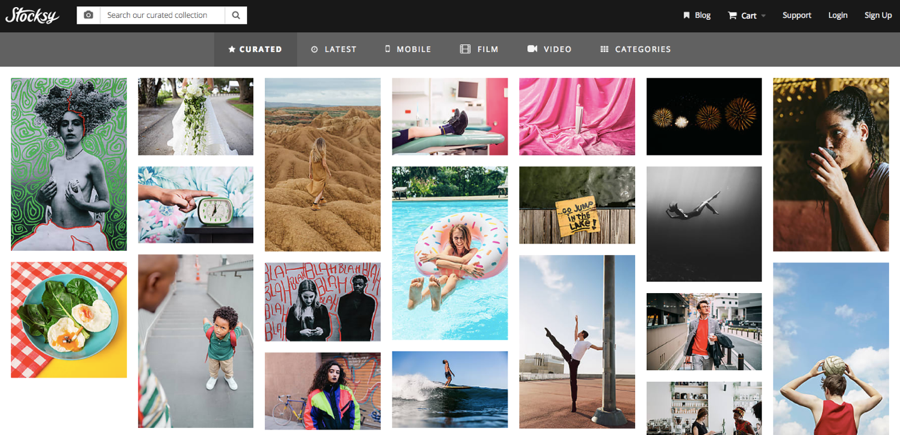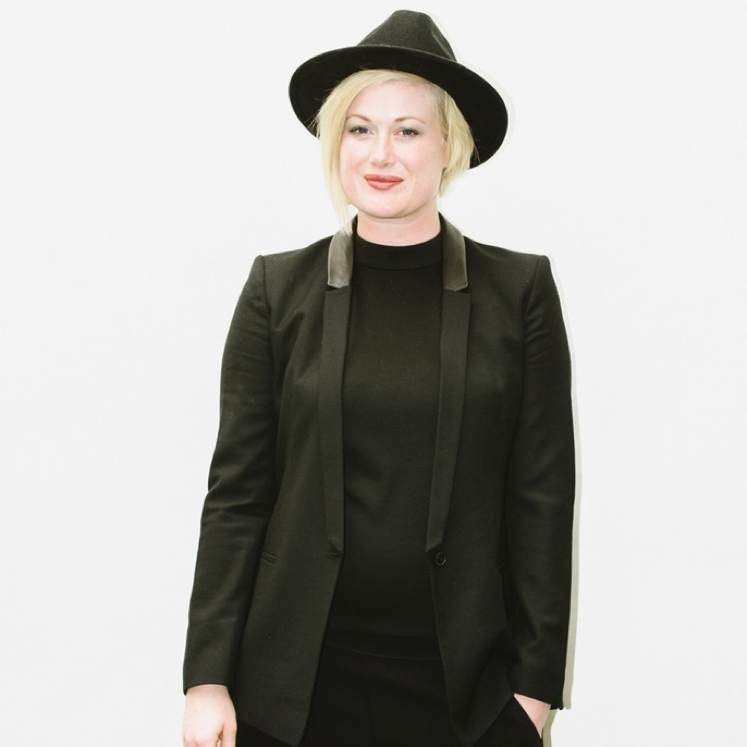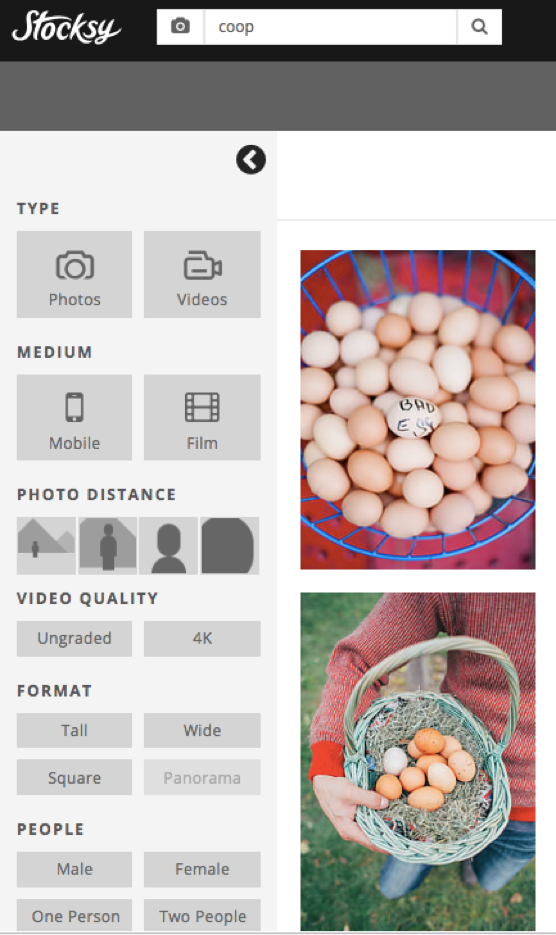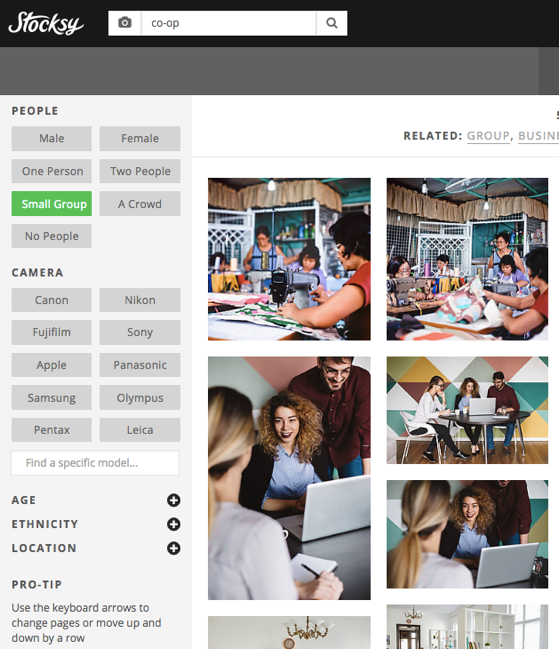Stocksy United, a video art platform: a model with an annual revenue of more than 10 million US dollars
In this age of digital technology, many art forms are challenged. How to balance ideals and reality, on the one hand to ensure independent creation, not to follow the trend, on the other hand to maintain competitiveness in the market, to survive and develop sustainably?
Stocksy United, described in this chapter, is a company that sells pictures and short films. The name of Stocksy implies the meaning of stock photo in English.
Headquartered in Victoria, Canada near Vancouver, Stocksy was established in April 2012 and officially launched its platform in March 2013. Stocksy is a platform cooperative. Each photographer who provides pictures to the platform is also a co-owner of Stocksy. In addition to the income from selling pictures and short videos, it also enjoys other economic rights and participation in decision-making. The purpose of this organization is to transfer the power of controlling the platform to the hands of the artist, so that the photographer can achieve independent creation and obtain a fair pay, and can develop a long-term career with personal style (career), without having to work hard to manage. Insecure jobs or gigs.
In 2016, Stocksy's total turnover reached US$10.7 million (approximately HK$84 million), of which US$4.9 million has been allocated to more than 900 photographers participating in the cooperative. From 2013 to 2017, the total amount so allocated to members has exceeded $20 million.
Stocksy not only has outstanding commercial achievements, but is often cited as a model success story in the occasions where the platform cooperation movement is introduced in various places. Why is Stocksy so compelling? How exactly does it work? What does its success mean?
Figure 1. Screenshot of the Stocksy website homepage

Photography creation: success or failure because of the Internet?
In the past, limited by equipment and exhibition space, only a few people could engage in photographic art creation. However, since the 1990s, film cameras have been gradually replaced by digital cameras and mobile phones with camera functions. The Internet and social media have completely changed the way photographic works are stored and circulated. "Everyone is a photographer", photography has become normal. But as a result of the proliferation of technology and rapid commercialization, photo styles are increasingly converging. Everyone can use the filter special effects provided by the mobile app. Photography seems to be an individual creation, but it is actually a "mechanical reproduction" under the operation of capital.
As a result, we often hear from professionals complaining that the quality of photography today is not as good as it used to be, and the remuneration for selling photos has also dropped significantly. There are hundreds of thousands or millions of photographer members on mainstream photo gallery platforms who want to sell their works, but the number of buyers is very limited. The photos are either uninterested, or even if you are lucky enough to meet a buyer, they may only sell for a few cents in US dollars, that is, a few cents in Hong Kong dollars. Totally not enough to feed a family.
With such a shabby payment, how can a photographer concentrate on creating? Oversupply has led to vicious competition, and photographers have also made up their minds. In the "new normal" operation of the gallery platform, the primary task is to make quick money for the boss and shareholders, regardless of artistic taste, let alone the long-term development of artists. Photographers who are "under pressure" must pursue quantity in order to make a living, and cater to the public's taste in the selection and production of topics. The same object needs to be photographed ten times from different angles, just to increase the chances of the photo being sold. However, the more the product converges, the less revenue there is. As a result, photographers have no time to take care of platform management, and cannot unite to change the unfair operating mechanism.
The above situation exists widely. But compared to other art forms such as music production, the problem of web galleries is probably not the worst. First of all, Photo Gallery does not have an oligopolistic global market like the three giants in the music industry, but a large number of gallery platforms cut throat competition. However, in order to increase their income, photographers also upload the same photos to different platforms, which greatly reduces the uniqueness of the work.
In addition, web galleries are one of the few Internet content industries where effective labor protests have occurred. The most famous example is that after Yahoo acquired Flickr in 2005, it announced a series of business reforms to the platform, which caused dissatisfaction among users, including some senior photographers. These users have a certain influence in the industry, and they have established social connections with each other through the FlickrLive online forum before the acquisition. Criticism echoed: "If Yahoo goes its own way, we'll all leave and never come back to Flickr!"
Yahoo was forced to compromise in the middle of the reform. The photographers who used the Internet to unite, fought a beautiful ambush this time. The Internet turned out not only to be a tool to oppress artists, but also to help photographers fight injustice, defend their dignity, and defend the value of art.
The soul of Brianna: both art and management are talented
Figure 2. Brianna Wettlaufer, the soul of Stocksy

The core figure of Stocksy, Brianna Wettlaufer, was born into an artistic family in Canada, the mother of a painter. She loves art design since childhood and is also a computer fan. She became famous in the photography industry through blogging at a young age, so she had the opportunity to enter iStockphoto, where she showed her talent in business management.
iStockphoto is the world's first online "microstock" company. The so-called "small micro" refers to the low price of pictures, and a piece of work can be sold for a few dollars. The author may be a professional photographer or an amateur. As long as the picture meets the customer's requirements, the transaction can be carried out. This is very different from the high-end gallery market that costs thousands of dollars.
In 2006, iStockphoto was acquired by the big company Getty Images, after which it underwent a drastic commercialization reform. The original tight network of photographers was broken up, and the style of work also changed. Brianna left iStockphoto with many iStockphoto participants. A few years later, the market ecology continued to deteriorate. Brianna and several old colleagues finally couldn't hold back and founded Stocksy in 2012 in order to change.
From the very beginning, Stocksy received a lot of attention, not because it was a co-op, but because Bruce Livingstone, who co-founded Stocksy with Brianna, was the founder of iStockphoto, who made $50 million from the sale of iStockphoto to Getty Images. It is believed that Bruce will invest in Stocksy and will also be the main trader. But in fact, Brianna is the real soul of Stocksy.
Brianna is not only talented in the fields of art and technology, but also good at platform operation and developing creative products. He prefers to participate in community building and is also a first-class business manager. Even with Bruce gone, Stocksy is still going strong. It's largely up to Brianna to play the role.
Curatorial Services: Perfection for Photographers and Clients
Since its launch in 2013, Stocksy's performance has increased year by year. In 2014, its total turnover was 3.5 million US dollars, which doubled to 7.9 million in 2015 and 10.7 million in 2016. At the same time, Stocksy's full-time team has grown from 6 to 50 people. Behind the steady growth is the distinctive concept of Stocksy. As mentioned above, the mainstream gallery platforms are too commercialized, and the edges and corners of photographers are smoothed out. In the absence of autonomous labor conditions, they are reduced to robots on the gallery assembly line. This is exactly what Stocksy is against.
From its inception to the end of 2017, Stocksy limited the total number of members to no more than 1,000 to ensure that they are all trend setters leading the visual trend. The entry threshold for Stocksy is very high. Stocksy receives an average of 5,000 applications every year. So far, more than 30,000 people have submitted materials, but only about 1,000 people have been lucky enough to be selected. Without outstanding work, there is basically no chance to join Stocksy. In January 2018, Stocksy finally announced the opening of the maximum number of members through internal democratic decision-making, but the selection process is still fiercely competitive.
The strict selection reflects Stocksy's insistence on the quality of its work. The team believes that only in this way can it better meet the needs of customers and provide them with "laser-precision curation services". Stocksy has also designed an image search tool that is easy for customers to use. Because only in this way, the platform can have more income, photographers can get higher remuneration, and can devote themselves to creativity.
Keeping photographers motivated is extremely important, as visual culture is always changing rapidly. Instagram is one of the drivers of image change. The filters and tones that are popular today will soon be outdated tomorrow. For example, the "anti-saturated color" aesthetics of the post-00s generation are quite different from those of the past. The younger generation is also more accepting of global multiculturalism.
Bruce commented: "Most large stock photo companies live in the surreal world of the past. They are often out of touch with the present and difficult to keep up with the times. And Stocksy has a special reputation in the circle. Our photos are processed with original content. Editing and property management, they have a story behind them and top-notch execution.”
Figure 3. Image Finder for Stocksy customers


Stocksy bucked the trend and launched an "original gallery movement" in the deteriorating online environment: art should not be based on quantity, but should promote photography "pixel-perfect (to perfection)". In order to achieve this goal, not only the photographers themselves have to work hard, but the Stocksy platform also needs to provide more editorial, coaching and administrative support. That's where Stocksy's five-person visual editorial team plays a key role. The editorial members of Stocksy come from the United States, Canada, the Netherlands, and Germany, and they all have unique insights into the visual arts. What's more valuable is that they all fully understand Stocksy's unique positioning, have a strong connection with each other, and are easy to reach a consensus.
Aside from meeting a few times a year, the five editors use Slack to communicate about their day-to-day work. Some editors used to be regular members of Stocksy before being promoted to editors. In addition to the salary increase, these editors can also guide young photographers more effectively, so that the new generation can improve their artistic level and actively participate in the construction of the platform community, because good works often come from collective cooperation.
Management based on the democratic mechanism of cooperatives
What exactly is a cooperative? How to establish a democratic mechanism for platform cooperation in Gallery Company? Brianna's understanding of cooperatives is: "Ethnical business. It operates transparently and maintains an organic relationship with its members; it undertakes educational functions and promotes public values; it allows all members to participate equally in decision-making and benefits the vast majority of people. Welfare."
When Stocksy was conceived, Brianna and Bruce were still living in Los Angeles. They decided to establish cooperatives, rather than non-profit organizations or social enterprises, because it would be more efficient to increase members' income and facilitate internal democracy building. However, U.S. cooperative laws are outdated and not very applicable to non-agricultural cooperatives. In contrast, the relevant laws and regulations in Canada have improved a lot, and the cooperative associations in the British Columbia area fully support the formation of cooperatives. Stocksy then went to Canada to take root.
According to Brianna, platform cooperatives differ from traditional cooperatives in several ways. It is not limited to traditional industries such as agriculture. With the help of network technology, more power transfer can be achieved, making cooperative operations more transparent, and allowing more members to work autonomously and with dignity. In addition to traditional face-to-face conversations, collective identity can also be built through online interactions. Stocksy has members in 65 countries, and without the Internet, traditional cooperative methods of organizing may not be able to build trust among such a dispersed community of photographers.
Specifically, the Stocksy site has a co-op feature built into it. Most of the members have to deal with photo-related matters on the website every day. At this time, they can easily enter the forum section of the website and interact with each other. The platform informs the members of the income, expenditure and development status by email every month. In addition, Stocksy also arranges irregular face-to-face meetings, promotes a culture of mutual assistance, and encourages senior members to act as mentors to guide the career development of the new generation.
Initially, the Stocksy team was very idealistic, hoping to completely realize a "flat hierarchy" without middle management. However, when it grows to a certain scale, the problem of unclear rights and responsibilities begins to appear, so it is still necessary to manage the division of labor.
There are three layers in Stocksy: A-level is the founder and consultant, responsible for matters including strategic investment, high-level partners, core decision-making, especially financial decision-making; B-level is a full-time employee of Stocksy, responsible for daily operations and improvement of work processes; C-level For all photographers who join, they have the right to fully understand the platform information, vote on major decisions such as year-end dividends, and participate in discussions on future directions. The purpose of such internal stratification and division of labor is not to reduce the democratic component, but to better listen to the voices of ordinary photographers and serve them more effectively.
One such example is the discussion a few years ago about increasing the platform’s commission rate. Previously, in order to increase the income of photographers, Stocksy set a very low proportion of the platform. However, after a period of time, it was found that the excessively low commission made the platform lack the funds required for reinvestment, and even maintaining the status quo was stretched, let alone improving services and developing the future.
The A-level members put forward a proposal for discussion in an uneasy mood, hoping to increase the platform commission. This will directly lead to a decline in the income of photographers, which must be opposed by most people. However, the management team fully disclosed the financial data, so that everyone can see the plight of the platform development. Second, the members have developed mutual trust with the A-level and B-level members after a period of interaction. Through detailed discussions, everyone gradually realized that although personal income has declined in the short term, the long-term healthy development of the platform will ultimately benefit everyone more than the harm.
The discussion came to an end, and all members voted anonymously. One person, one vote, everyone is equal, and a simple majority of democratic voting. A total of 404 valid votes were received in this vote: just 400 votes in favor of increasing the lottery, and only 4 votes against! Without an effective platform cooperation mechanism and strong mutual trust, it is difficult to achieve such surprising results.
Message to Young Cooperative Members: Patience Accumulation and Shared Commitment
Water drops, but Stocksy does not succeed because of luck, and it is not only because of the cooperative organization method that can solve all problems. The real reason lies in the unremitting persistence and collective creativity of the Stocksy team, turning the abstract principles of the cooperative into the cultural consensus of photographers and the concrete practice of platform operation.
Even in Canada, though, the public has prejudice against cooperatives. Many people heard that Stocksy was a cooperative, and thought it was a group of radical "socialists". Brianna also joked that because of the "stigma" of the cooperative, colleagues in the early years had to work harder to prove Stocksy's professionalism.
In recent years, as Stocksy's position in the photography circle has become increasingly stable, the cooperative has become an intangible asset of the platform. After a long period of time, some clients realized that Stocksy was originally a cooperative organization, which led to more trust, and even began to look at the cooperative movement with admiration.
How should young people join the platform cooperation movement? Brianna only emphasizes one thing: patience. "You can't do it overnight, but it takes time to see changes. Newbies who join a sport must not be too self-centered. Be prepared to be a responsible part of a cooperative community."
Like my work? Don't forget to support and clap, let me know that you are with me on the road of creation. Keep this enthusiasm together!



- Author
- More